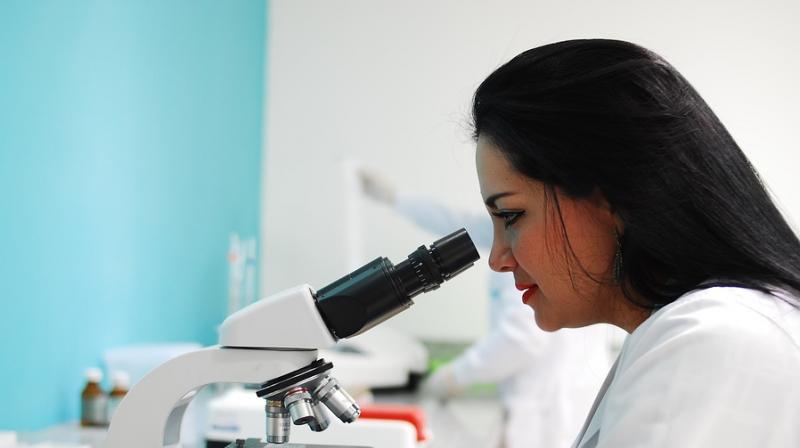Scientists identify small protein with a huge effect
Here is what researchers found.

Washington: A new study has identified the existence of inefficient FAT10 system- a small protein with a huge effect.
Its attachment to a target protein is a signal for its degradation. FAT10 is a marking system for degradation that seems to be inefficient. In contrast to its biological competitor, ubiquitin, which is recycled, FAT10 is degraded along with its target protein which appears wasteful at first glance.
A team of researchers at the University of Konstanz analyzed the high-resolution structure of the protein FAT10. The team developed a molecular technique to produce stable and highly-concentrated FAT10 with a high degree of purity. As a consequence, the researchers could carry out a structural analysis of FAT10 via x-ray crystallography and magnetic resonance spectroscopy.
In contrast to ubiquitin with one domain, FAT10 has two domains, i.e. folds that enable the proteins to function. The team discovered that both domains are connected by a flexible linker and their folding is significantly less compact than in ubiquitin. Importantly, FAT10 has a short, disordered extension.
Experiments show that the loose folding and the disordered extension of the FAT10 protein have an important regulatory function that actually simplifies the degradation of the target molecule. As a result, no complicated upstream processes of partial substrate unfolding are necessary, as in the ubiquitin-system, to have the enzyme 26S proteasome, which actually carries out the degradation, spring into action. This is superfluous due to the loose folding of the FAT10 domains.
The enzyme targets the disordered part and can easily unfold the two flexible and loosely folded domains, and consequently can pull apart the attached target protein and degrade it.
It was already known before that ubiquitin and FAT10 have entirely different binding properties. That is all the more surprising, given the fact that the folding of both proteins' domains is based on the same structure.
The surfaces of FAT10 and ubiquitin are entirely different, and they determine which proteins are bound. Consequently, both marking systems have different interaction partners. FAT10 is predominantly found in inflammatory tissue. In the researcher's view, it was an advantage that the marking system is destroyed along with the protein.
Stating another noticeable fact about FAT10, researchers Marcus Groettrup said, "In 13 different types of cancer it is found to an extended degree. We can conclude that FAT10 is advantageous for the cancer cells, for their survival and growth". If FAT10, for example, links to proteins that suppress tumour growth, they are degraded and the tumour cell can grow more easily. For such cases, it is conceivable to develop a cancer drug inhibiting the enzymes that link FAT10 and the target proteins."
The findings are published in the Journal of Nature Communications.

